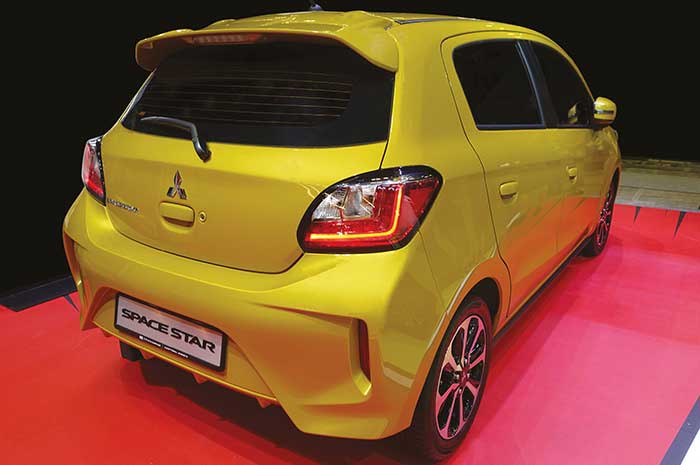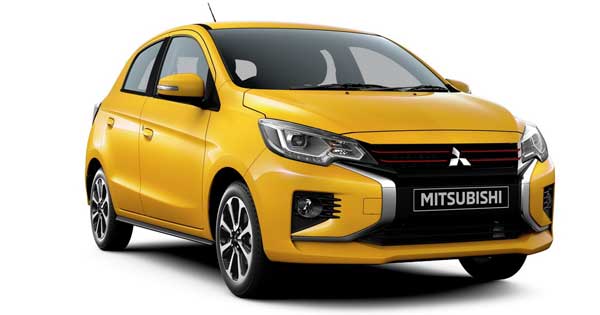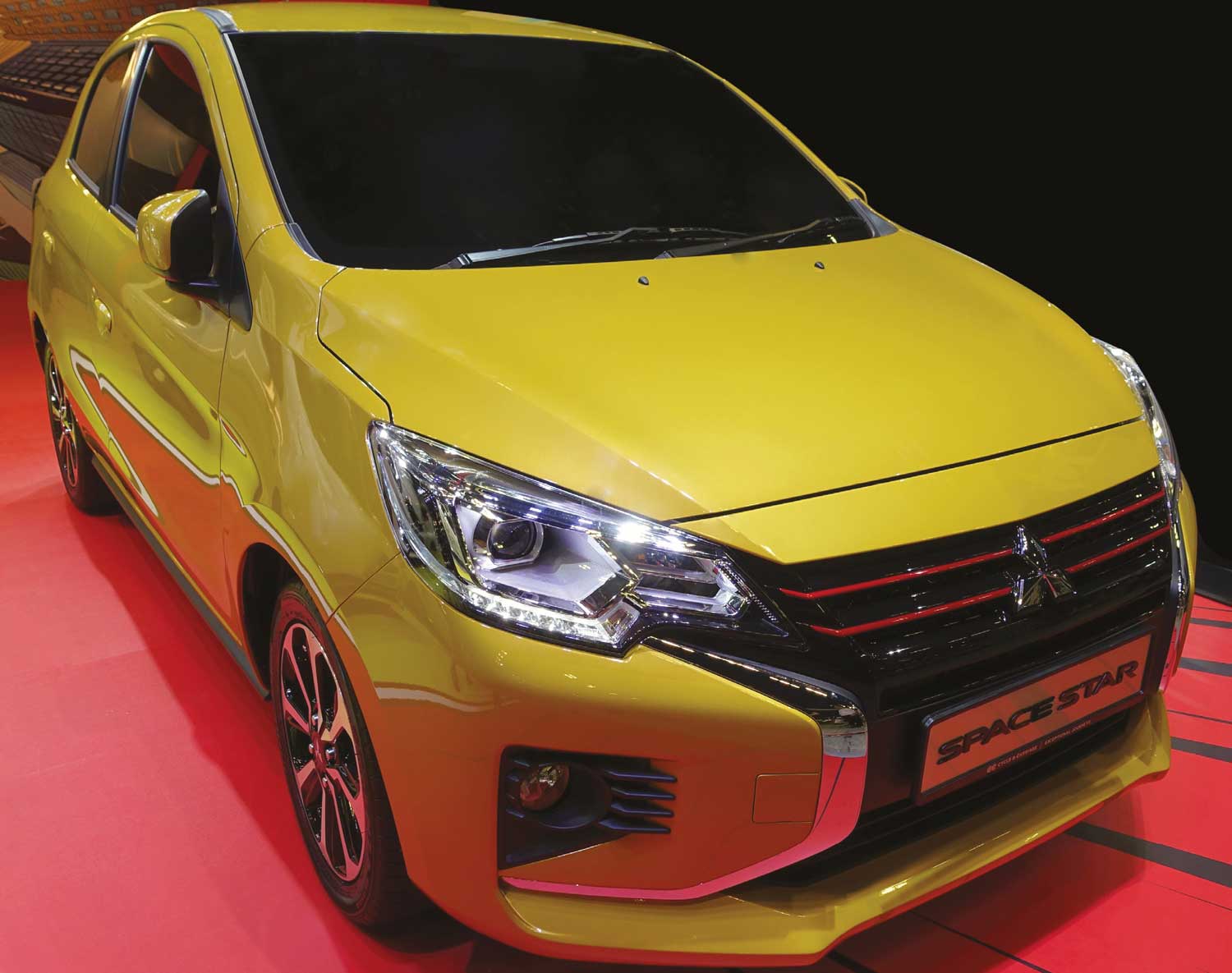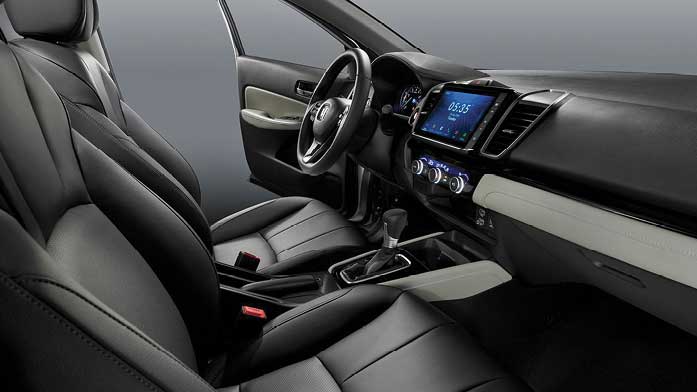AT THE WHEEL

REEL TALK
May 27, 2020
DULCET TONES
May 27, 2020The Mitsubishi Mirage, which was also known as the Colt up to the fifth generation, was first released in 1978 as a hatchback version of the Lancer sedan and wagon. This sixth generation Mirage was introduced at the 2012 Bangkok International Motor Show and the platform is still being used for the 2020 model – although with a second facelift after the one in 2017.
And the Mitsubishi Colt and Lancer sedan/wagon have been the company’s volume sellers through the years. Though the Mirage is a budget product today, it’s still an important model for the brand in some countries such as the Philippines, Australia and Thailand.
Truth be told, we hated the roundish and drab front end treatment of both the Mirage hatch and its sedan sibling – the Attrage (or G4 sedan). With its second update in November last year, Mitsubishi finally managed to make the car more aesthetically acceptable.
MODEL
A not so new city car adorned with some makeup to bring it closer to the competition in the subcompact hatchback class. In fact, this is the second facelift the Mirage has undergone. We put this car through its paces to see if it holds up or falls apart at the seams against segment rivals such as Hyundai’s i10, Honda’s Jazz/Fit and Mazda2 – as the platform has been around since 2012.
ENGINES
Depending on where you are located, there are two petrol engine choices. The first is a 1-litre DOHC (double overhead cam) 3-cylinder naturally aspirated (NA) engine with MIVEC (Mitsubishi’s term for variable valve timing).
The more common engine in Asia is the 1.2-litre DOHC 3-cylinder NA with MIVEC.
No diesels or hybrids have been added as it’s equipped with a frugal petrol engine.
VERDICT
Let’s keep in mind that the purpose of this car, apart from being a compact city runabout, is that it’s an entry point for a buyer who is on a very tight budget. And with that in mind, it achieves its objective. Let’s also keep in mind that low budget does not resonate with power, luxury materials or cutting-edge design.
All of that being considered, you may find the no-frills Mirage to be what you’re after.
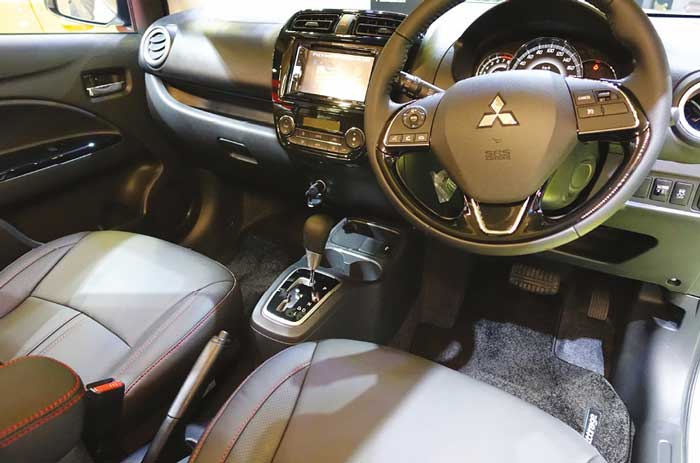
It’s thought that Mitsubishi’s new corporate face with chrome accents on either side of the front bumper makes the car look wider and therefore, less disproportionate compared to the first facelift.
This update also makes the Mirage/Attrage easily recognisable as a product of the same company – similar to the updated Outlander, Eclipse Cross and ASX. The new aesthetic is enhanced by several sharp vertical creases and vents on the front and rear bumpers but the midsection of the car remains the same.
On the inside there’s cheap scratchy grey plastic everywhere. The upholstery of the unsupportive seats makes you feel as if you’re sitting on a seat in public transport. The switchgear and buttons further highlight the Mirage’s cheap feel, which is strange considering other brands like Mazda and Hyundai have moved on to quality materials as far as their production cost budgets allow.
The base model is equipped with manual thermostat regulated air conditioning while the higher range gets the climate control type.
We suppose the situation will improve slightly in the next generation of the Mirage/Attrage if Mitsubishi doesn’t want to be left behind as most manufacturers edge towards better materials. However, what has improved is the included tech. It now comes with a reversing camera as well as an Apple CarPlay head unit, active lane keeping assist and active brake mitigation – in case you have a lapse in concentration.
Some models are equipped with cruise control with steering mounted controls and all models are provided with start-stop technology, thereby improving fuel economy figures to almost hybrid levels.
We are not going to delve into refinement levels or talk about handling – as you may end up disappointed! Nevertheless, you should know that road noise and the coarse engine note at higher revs will make sure you can’t hear what your passengers are saying.
To be fair however, we’d like to point out that this is a car designed with a tight budget, which the manufacturer is trying to adhere to. That translates into costs needing to be cut from some items, which give this car a quality feel – so we really shouldn’t be comparing it to a Mazda2 or even the Honda Jazz/Fit as they’re in a higher price bracket.
But the ‘cheap as chips’ Mirage/Space Star is a great point of entry for the first car buyer or even as a second runabout for a two car family.
